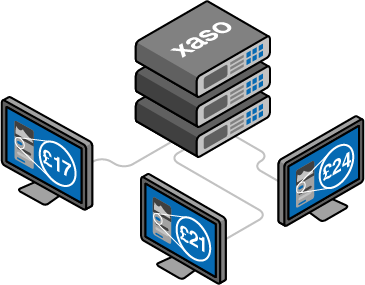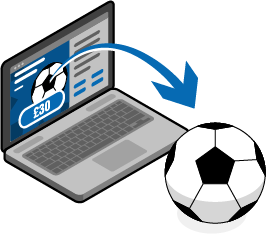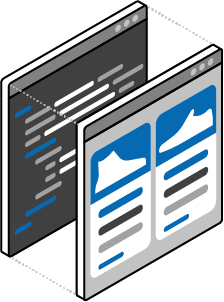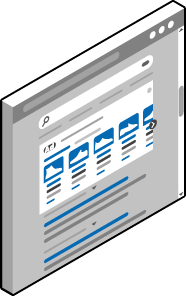Of all the shopping campaigns we’ve audited (on both Google Ads and Microsoft Advertising), very few have had really strong implementations that fully exploit the potential of the available features. With shopping ads representing a large volume of revenue for many e-commerce stores, even improvements of small percentages can cumulatively result in large volumes of GP.
So, we wanted to share a few of our basic (but hugely effective), more time-sensible tactics that we employ to help our customers get the most out of their shopping spend.
1. Track gross margin – not the full sale value
This is something that’s slightly harder to implement but has an unbelievably huge impact on optimisation and reporting, and ultimately campaign performance.
The most common mistake we see with shopping campaigns is that the conversion tracking is configured to report the full sale value (including the unit cost, the full delivery fees (when they’re zero profit), and sometimes even including the VAT). By having your tracking system deduct the unit cost from the sale value, and pass only the gross margin of the sale back to your ads account; you’re able to use native bidding portfolios to optimise for volume of margin, and therefore gross profit, rather than volume of revenue.
Something commonly overlooked with this is the delivery fee too; with sites offering free delivery on orders over a certain value, you’d still need to deduct the carriage costs from the margin on these orders, even though the cost wasn’t passed onto the customer during the checkout.
This is especially effective when managing shopping campaigns for sites that generally see sold baskets that include multiple items with different values and margins, but even in instances where you don’t see this, you’re able to much more effectively optimise for volume of profit – it’ll completely remove the guess workaround how your products are performing at campaign level.
In reality, this works well for paid search campaigns for e-commerce stores too; where generic search terms can represent many — sometimes all — product categories and types, tracking in this way enables you to manage your bidding to maximise volume of GP regardless of what products, on average, are purchased off the back of that pesky, high volume, extremely ambiguous generic keyword.

2. Track your competitors’ pricing
Price tracking alone can provide unmatched optimisation potential; it can reveal opportunities for price increases, provide insights into campaign performance based on price vs. peer set average, and through testing you can determine the true volume of GP difference higher, or lower pricing has on your campaign performance.
If your product has a 50% margin, a 10% price reduction would result in needing to generate 25% more sales to achieve the same volume of gross margin. If you’re already best priced, increasing the gap between you and your competitors further would see vast uplifts in your conversion rate. Due to the increased conversion rate, you’d be able to bid more aggressively and achieve greater volumes of traffic too.
But if you’re well above the market average in regards to cost, a 10% reduction wouldn’t likely increase your conversion rates anywhere near enough, so the results of any testing here are very dependant on your market conditions on that day. Price adjustments don’t also need to be across the board, we’ll write soon on personalised pricing and how best to implement it into your PPC strategy.
Google now offer a form of native price tracking within the Google Merchant Center, via their “Price competitiveness” report – this will only report on pricing as a % vs. other advertiser pricing, and is limited to only pricing that Google is collecting via advertisers on Google, so would miss out on off-site pricing on sites like eBay, Amazon, Argos etc.
For e-commerce stores of all sizes, we strongly recommend you implement bespoke price tracking (we do for most of our clients), at least on your core products; Google’s offering is helpful but it isn’t the full picture, and because of this you’ll find the effects of the price changes that you see within their reports won’t be consistent.
Test tracking is a fairly different form of data collection but falls closely under the same type of competitor intelligence. For large retailers looking to dominate in their market, you can accelerate your own marketing activity by tracking your competitors A/B, or multivariate landing page and ad copy testing, and steal their learnings to improve your own marketing performance.
In markets with fewer advertisers, you can timeline competitor testing, site and price changes alongside your own campaign performance, and begin to understand why you’re having such a bad June (yeah, thanks guys).

3. Fully utilise your product pages
This is another simple one that can have a huge impact on the net performance of your shopping campaigns. Google and Microsoft have few landing page requirements when it comes to shopping ads:
- Display the product image
- Contain a buy button (and the ability to purchase the product)
- Have the landing page reflect the product data in feed (availability, price, condition, colour etc.)
- A few other immaterial, or conditional technical requirements
Beyond this, you have full reign on landing page design, and many people don’t maximise their shopping spend by providing alternative, similar products in different sizes, colours, or prices on their product landing pages. While the users’ entrance was via a product, to view more information, images etc., you can still better facilitate their overall need and ultimately, drive more favourable outcomes when that product wasn’t quite what they wanted.
In some instances providing the full range below your entry product is most effective, in others, it’s providing cost alternatives alongside it that sees the largest uplifts in conversion rates – as users navigate away from their entry product onto second choice products that better facilitate their preferences.

4. Optimise and run tests with your product data
For one of our larger e-commerce clients, we’ve been able to increase the click-through rates of their paid shopping campaigns by up to 35% vs. their first-month performance (it’s taken some time, but this is with like for like targeting), all achieved (almost) purely via structured and effective testing of the product data.
You should view your shopping advert like any other search advert; dependant on word length, spacing and character width, you’ve got up to between 20 to 27 characters to get your users attention before the rest of the title is truncated in your shopping advert. Creating duplicate products in your shopping feed, or within your Merchant Center, is a great way of testing what information at the start of the title is most important to the average online shopper.
You can also use negatives to isolate products to match individual, or smaller groups of search terms, and edit the product titles to better match the search terms, repeating this for all of the variations of search traffic in your search market.

5. Leverage Merchant Center promotions
Many online retailers run promotions, but not many PPC marketers are aware that you can reflect these promotions in the front-end of your shopping adverts. When it appears in search alongside your competitors, it’ll show your current discount, or voucher code, with a new adjusted price.
Merchant Center promotions are immensely effective at increasing click-through rates and conversion rates; ads with promotions see up to a 28% increase in conversion rates vs. standard shopping ads (no surprises there). You can find out more about running promotions here.

—
If you’ve got any questions, would like to find out more about our approach to managing paid shopping campaigns — or would like help running your own campaigns — feel free to get in touch.

